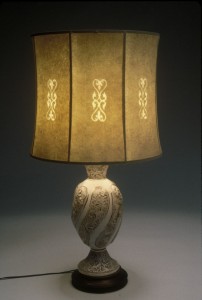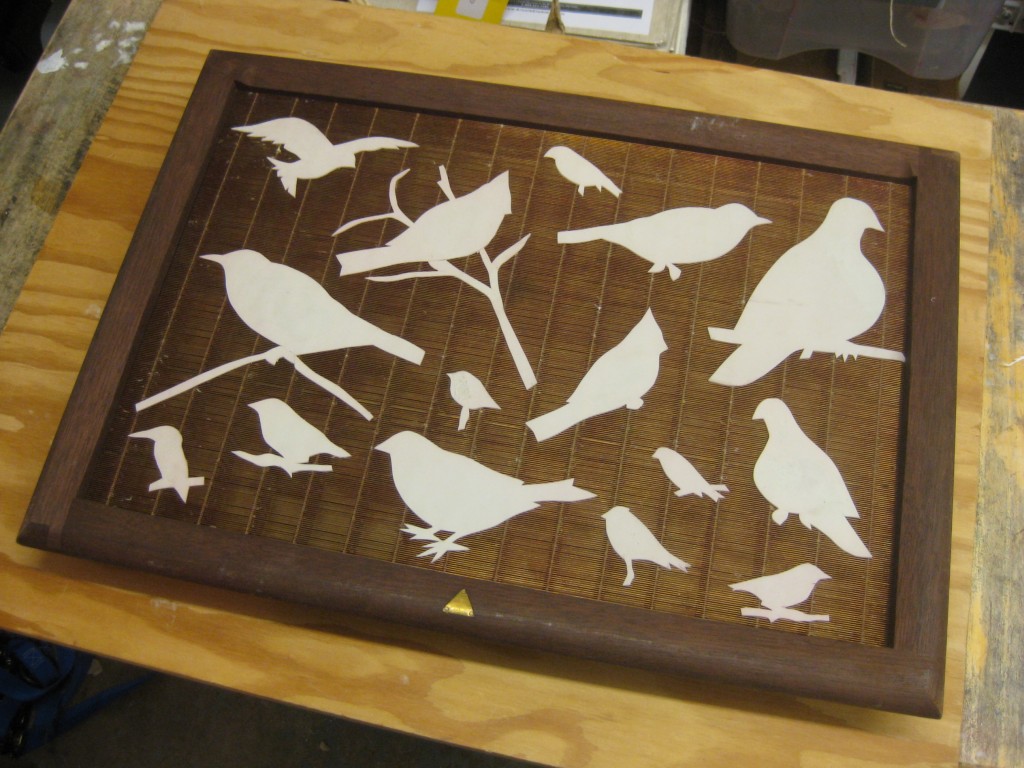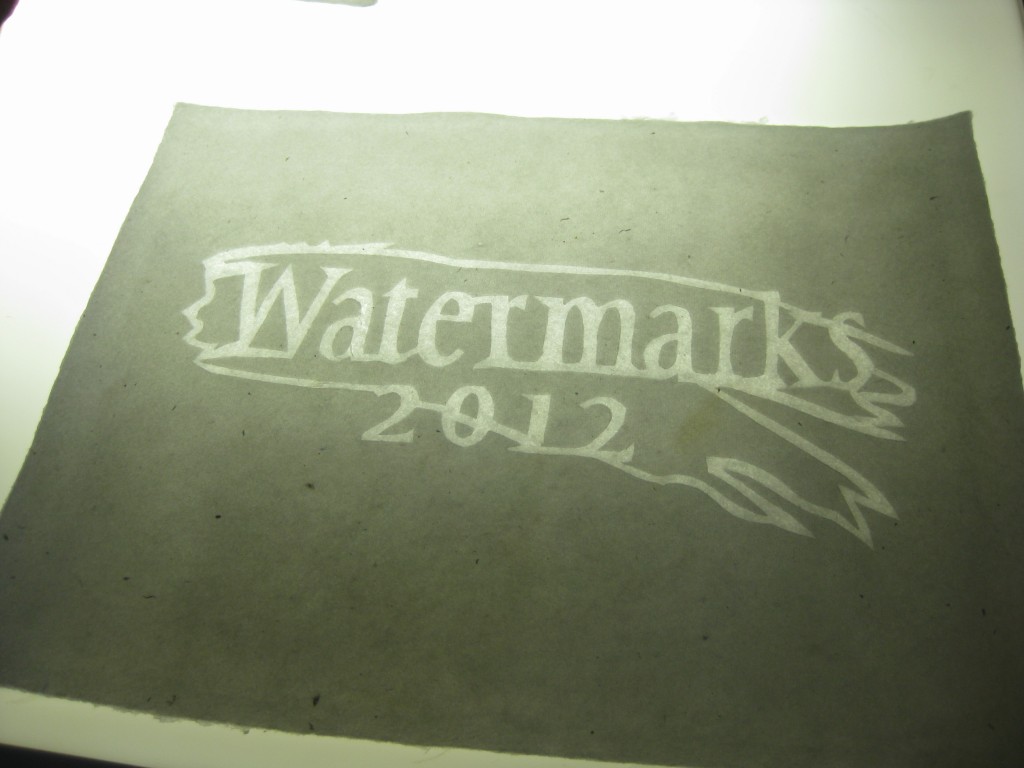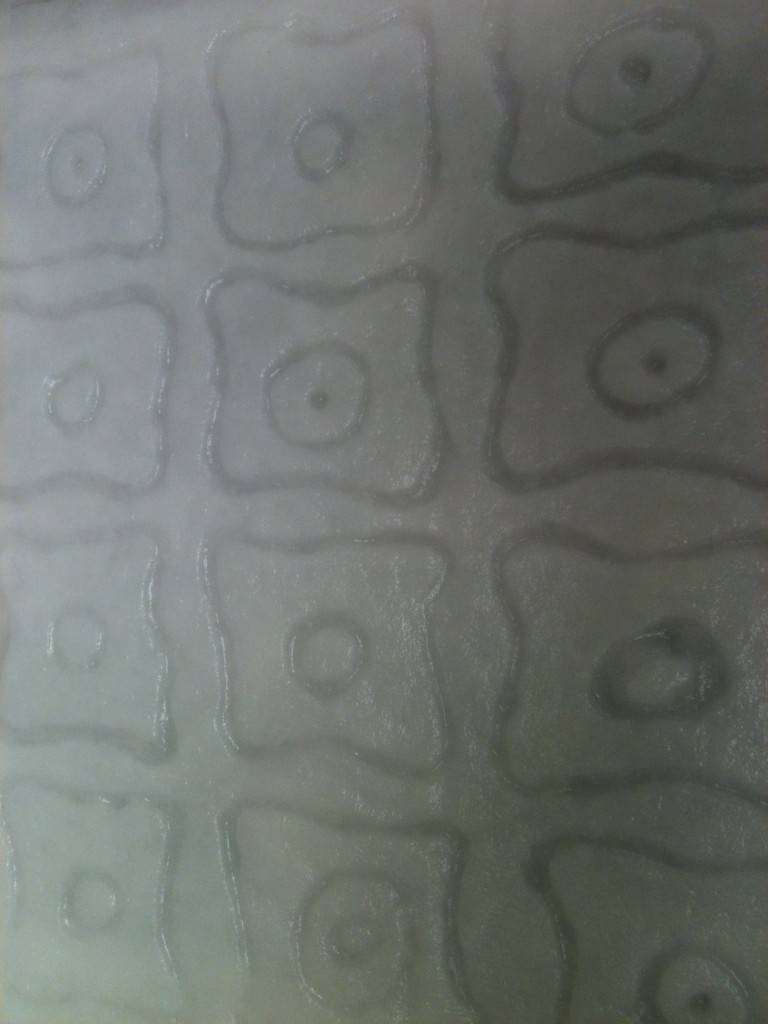Watermarks
This past weekend, I taught a workshop on how to make watermarks at the University of the Arts in Philadelphia. Watermarks (designs which appear in a sheet of paper when illuminated) have intrigued me since the first time I laid eyes upon them. So you can imagine how excited I was when I learned how to make them myself!

A really old watermarked lamp commission by yours truly.
Traditional watermarks were made with wire: designs or logos were twisted in wire and soldered or sewn to the papermaking mould.

When I worked at Dieu Donné Papermill in the 1990’s, I was exposed to a multitude of contemporary ways in which artists were fabricating watermarks (wire marks which were sewn to the mould often got in the way of the artist’s ideas). One of my favorite methods is to cut a line image out of a thin rubber material called buttercut, which comes with an adhesive on the back (you can purchase buttercut by the foot from Alpine Stained Glass).

A hand-cut watermark made from buttercut
This weekend, we practiced two watermarking techniques using buttercut: first, we cut line drawings from the buttercut to make watermarked sheets; and then we also cut larger silhouette images, which we used more like stencils. And BTW, you can have these types of images cut using technology (vector files done in illustrator can be sent to vinyl plotters).

Silhouette watermark in buttercut
The line drawings were used to make pure watermarked sheets in pale pulps (we experimented with cotton linters and bamboo pulp – available from Carriage House Paper – which was new to me and produced remarkable results).

With the silhouette images, we made very thin sheets of paper using a veil pulp (finely beaten cotton linter) that washed over the buttercut and filled in the areas on the mould. These sheets were then couched onto a backing sheet, which makes the image visible without backlighting.

Laminated green silhouette couched onto a white base sheet.
My apologies to my students – I did not take enough photos during class, so many of these are older images!

Fabric paint watermark by Mary Tasillo
A third technique we explored required fabric paint (available at craft stores). We painted images on a mesh (a layer of fiberglass window screen topped with noseeum netting) cut to the size of our moulds. After the fabric paint set (overnight) we placed the su-like screen on top of our moulds and pulled sheets. This technique is more painterly than the buttercut.

Detail of Winnie Radolan’s fabric paint watermark in bamboo fiber.
Have you done any experimental watermarking? Leave a comment below and tell us about your techniques!
And a quick side note: earlier in the week I was in Baltimore and had the opportunity to hear Lynn Sures talk about her annual trek/workshop in Fabriano, Italy. These incredible chiarascuro watermarks are still being produced in Italy at the Fabriano Mill. Check out the details for Lynn’s trip this coming summer.

3 Comments
those old fashioned doilies, the plastic ones, make nifty watermarks.
[…] To create the watermarks in Sheets of Evidence, the text and images were scanned from traditional drawings. Afterwards, they were cut into adhesive-backed rubber called butternut. Afterwards, they were placed on wove molds, like this one by Helen Hiebert: […]
[…] and drives lined with paper bag luminaria. Once I learned to make paper and discovered the watermarking technique, I combined the two […]